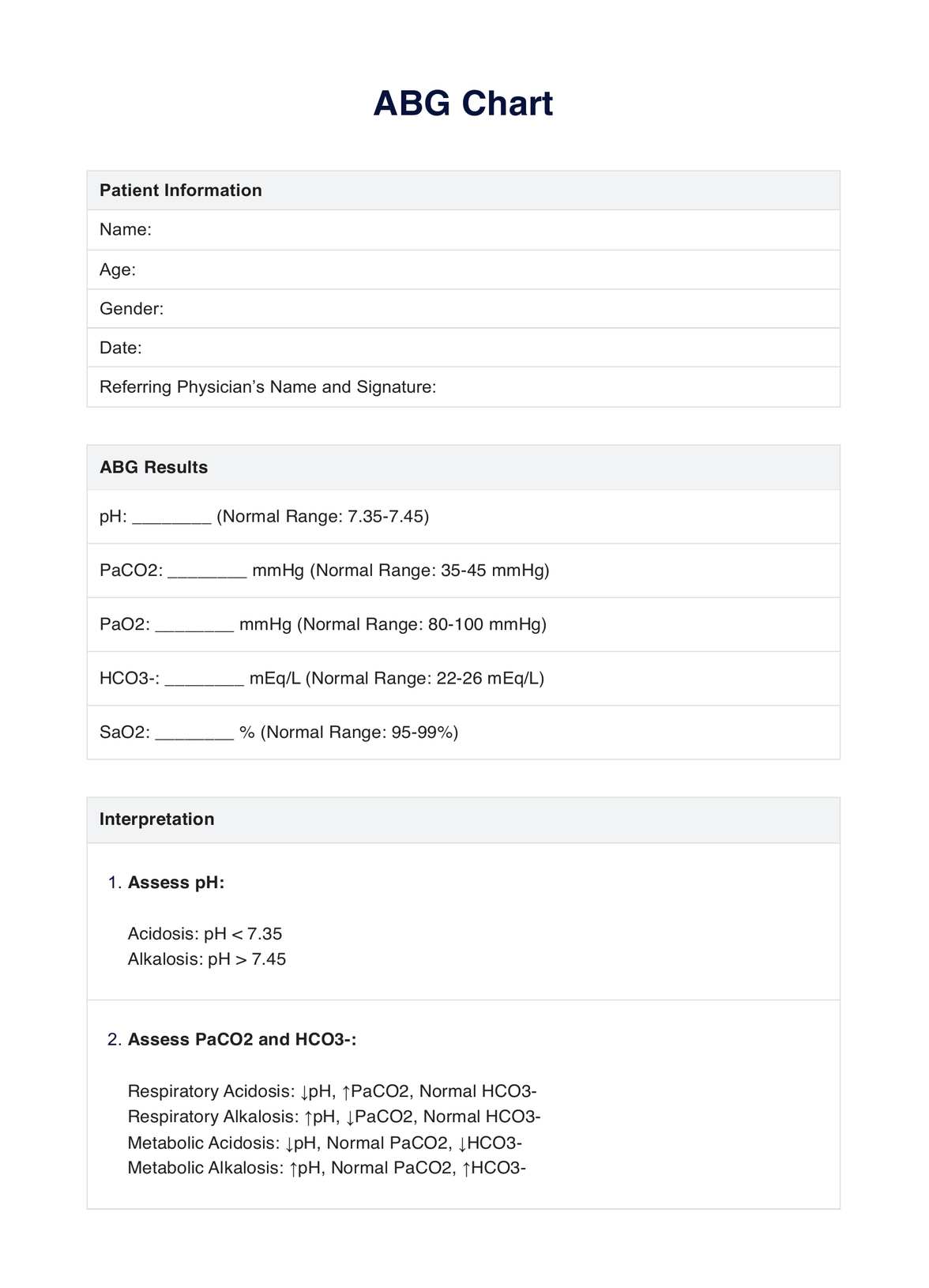Doctors who treat metabolic and respiratory disorders, specifically endocrinologists and pulmonologists, are the ones who may typically request an ABG chart.

ABG
When assessing, diagnosing, and monitoring the progress of a patient�??s respiratory and metabolic disorders, make sure you have an ABG chart readily available.
Use Template
ABG Template
Commonly asked questions
ABG charts can be used at every point of patient care, from diagnosis to treatment evaluation.
ABG charts can be used as an educational tool, reference, and document to record the results and corresponding interpretation of the patient??s condition.
EHR and practice management software
Get started for free
*No credit card required
Free
$0/usd
Unlimited clients
Telehealth
1GB of storage
Client portal text
Automated billing and online payments











